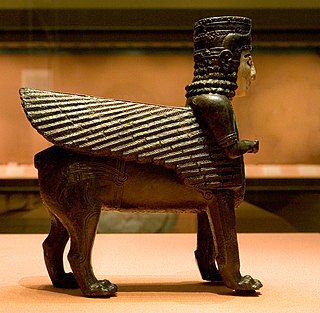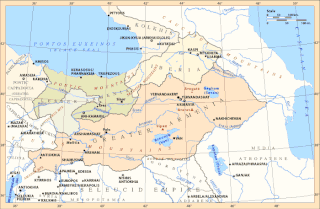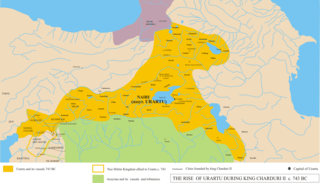Births
This section is empty.You can help by adding to it.(August 2013) |
| Millennium: | 1st millennium BC |
|---|---|
| Centuries: | |
| Decades: | |
| Years: |
| 590 BC by topic |
| Politics |
|---|
| Categories |
| Gregorian calendar | 590 BC DLXXXIX BC |
| Ab urbe condita | 164 |
| Ancient Egypt era | XXVI dynasty, 75 |
| - Pharaoh | Psamtik II, 6 |
| Ancient Greek era | 47th Olympiad, year 3 |
| Assyrian calendar | 4161 |
| Balinese saka calendar | N/A |
| Bengali calendar | −1182 |
| Berber calendar | 361 |
| Buddhist calendar | −45 |
| Burmese calendar | −1227 |
| Byzantine calendar | 4919–4920 |
| Chinese calendar | 庚午年 (Metal Horse) 2107 or 2047 — to — 辛未年 (Metal Goat) 2108 or 2048 |
| Coptic calendar | −873 – −872 |
| Discordian calendar | 577 |
| Ethiopian calendar | −597 – −596 |
| Hebrew calendar | 3171–3172 |
| Hindu calendars | |
| - Vikram Samvat | −533 – −532 |
| - Shaka Samvat | N/A |
| - Kali Yuga | 2511–2512 |
| Holocene calendar | 9411 |
| Iranian calendar | 1211 BP – 1210 BP |
| Islamic calendar | 1248 BH – 1247 BH |
| Javanese calendar | N/A |
| Julian calendar | N/A |
| Korean calendar | 1744 |
| Minguo calendar | 2501 before ROC 民前2501年 |
| Nanakshahi calendar | −2057 |
| Thai solar calendar | −47 – −46 |
| Tibetan calendar | 阳金马年 (male Iron-Horse) −463 or −844 or −1616 — to — 阴金羊年 (female Iron-Goat) −462 or −843 or −1615 |
The year 590 BC was a year of the pre-Julian Roman calendar. In the Roman Empire, it was known as year 164 Ab urbe condita . The denomination 590 BC for this year has been used since the early medieval period, when the Anno Domini calendar era became the prevalent method in Europe for naming years.
This section is empty.You can help by adding to it.(August 2013) |
The 8th century BC started the first day of 800 BC and ended the last day of 701 BC. The 8th century BC is a period of great change for several historically significant civilizations. In Egypt, the 23rd and 24th dynasties lead to rule from Nubia in the 25th Dynasty. The Neo-Assyrian Empire reaches the peak of its power, conquering the Kingdom of Israel as well as nearby countries.
The year 585 BC was a year of the pre-Julian Roman calendar. In the Roman Empire, it was known as year 169 Ab urbe condita. The denomination 585 BC for this year has been used since the early medieval period, when the Anno Domini calendar era became the prevalent method in Europe for naming years.
Year 164 BC was a year of the pre-Julian Roman calendar. At the time it was known as the Year of the Consulship of Torquatus and Longinus. The denomination 164 BC for this year has been used since the early medieval period, when the Anno Domini calendar era became the prevalent method in Europe for naming years.

Sargon II was the king of the Neo-Assyrian Empire from the downfall of his predecessor Shalmaneser V in 722 BC to his death in battle in 705 BC. Though Sargon claimed to be the son of the previous king Tiglath-Pileser III, this is uncertain and he probably gained the throne through usurping it from Shalmaneser V. Sargon is recognized as one of the most important Neo-Assyrian kings due to his role in founding the Sargonid dynasty, which would rule the Neo-Assyrian Empire until its fall less than a century after Sargon's death.
The year 681 BC was a year of the pre-Julian Roman calendar. In the Roman Empire, it was known as year 73 Ab urbe condita. The denomination 681 BC for this year has been used since the early medieval period, when the Anno Domini calendar era became the prevalent method in Europe for naming years.
The year 615 BC was a year of the pre-Julian Roman calendar. In the Roman Empire, it was known as year 139 Ab urbe condita. The denomination 615 BC for this year has been used since the early medieval period, when the Anno Domini calendar era became the prevalent method in Europe for naming years.

Jotham or Yotam was the eleventh king of Judah, and son of King Uzziah and Jerusha, daughter of Zadok. Jotham was 25 when he began his reign, and reigned for 16 years. Edwin R. Thiele concluded that his reign commenced as a coregency with his father, which lasted for 11 years. Because his father Uzziah was afflicted with tzaraath after he entered the Temple to burn incense, Jotham became governor of the palace and the land at that time, i.e. coregent, while his father lived in a separate house as a leper.

Sophene was a province of the ancient kingdom of Armenia and of the Roman Empire, located in the south-west of the kingdom. The region lies in what is now southeastern Turkey.

Rusa I ruled: 735–713 BC) was a King of Urartu. He succeeded his father, king Sarduri II. His name is sometimes transliterated as Rusas. Apparently, he was known to Assyrians as Ursa and possibly Urzana.

The Satrapy of Armenia (Armenian: Սատրապական Հայաստան Satrapakan Hayastan; Old Persian: Armina or Arminiya, a region controlled by the Orontid Dynasty was one of the satrapies of the Achaemenid Empire in the 6th century BC, which later became an independent kingdom. Its capitals were Tushpa and later Erebuni.

Tushpa was the 9th-century BC capital of Urartu, later becoming known as Van which is derived from Biainili the native name of Urartu. The ancient ruins are located just west of Van and east of Lake Van in the Van Province of Turkey. In 2016 it was inscribed in the Tentative list of World Heritage Sites in Turkey.

The Neo-Assyrian Empire was an Iron Age Mesopotamian empire, in existence between 911 and 609 BC, and became the largest empire of the world up until that time. The Assyrians perfected early techniques of imperial rule, many of which became standard in later empires, The Assyrians were the first to be armed with iron weapons, and their troops employed advanced, effective military tactics.

The Urartu–Assyria War was a conflict between the Kingdom of Urartu and the Neo-Assyrian Empire. The war began around 714 BC, with the invasion of Urartu by the Assyrian King Sargon II. Sargon led multiple offensives deep into Urartian territory, amassing numerous victories in the war. Following his death, however, Urartian Kings Argishti II and Rusa II launched many successful counterattacks, reclaiming Urartu's lost territory and gaining some from Assyria. However, their successors suffered multiple major defeats, resulting in Urartu becoming an Assyrian client state.

Urartu is a geographical region commonly used as the exonym for the Iron Age kingdom also known by the modern rendition of its endonym, the Kingdom of Van, centered around Lake Van in the historic Armenian Highlands. The kingdom rose to power in the mid-9th century BC, but went into gradual decline and was eventually conquered by the Iranian Medes in the early 6th century BC. The geopolitical region would re-emerge as Armenia shortly after. The peoples of Urartu are the most easily identifiable ancestors of the Armenians.
Ancient Armenia refers to the history of Armenia during Antiquity. It follows Prehistoric Armenia and covers a period of approximately one thousand years, beginning at the end of the Iron Age with the events that led to the dissolution of the Kingdom of Urartu, and the emergence of the first geopolitical entity called Armenia in the 6th century BC. Highlights of this period include the rise of ancient Armenia as an important state in Western Asia in the 4th century BC; a briefly held empire under Julius Caesar's contemporary the Great King Tigranes II ; the kingdom's official conversion to Christianity in 301; and the creation of the Armenian alphabet in the year 405. It concludes with the demise of the Armenian kingdom and the country's partition later in the 5th century, marking the beginning of Medieval Armenia.

The prehistory of Anatolia stretches from the Paleolithic era through to the appearance of classical civilisation in the middle of the 1st millennium BC. It is generally regarded as being divided into three ages reflecting the dominant materials used for the making of domestic implements and weapons: Stone Age, Bronze Age and Iron Age. The term Copper Age (Chalcolithic) is used to denote the period straddling the stone and Bronze Ages.
This is a timeline of Artsakh's history, representing territorial control under three columns:
| This BC year article is a stub. You can help Wikipedia by expanding it. |